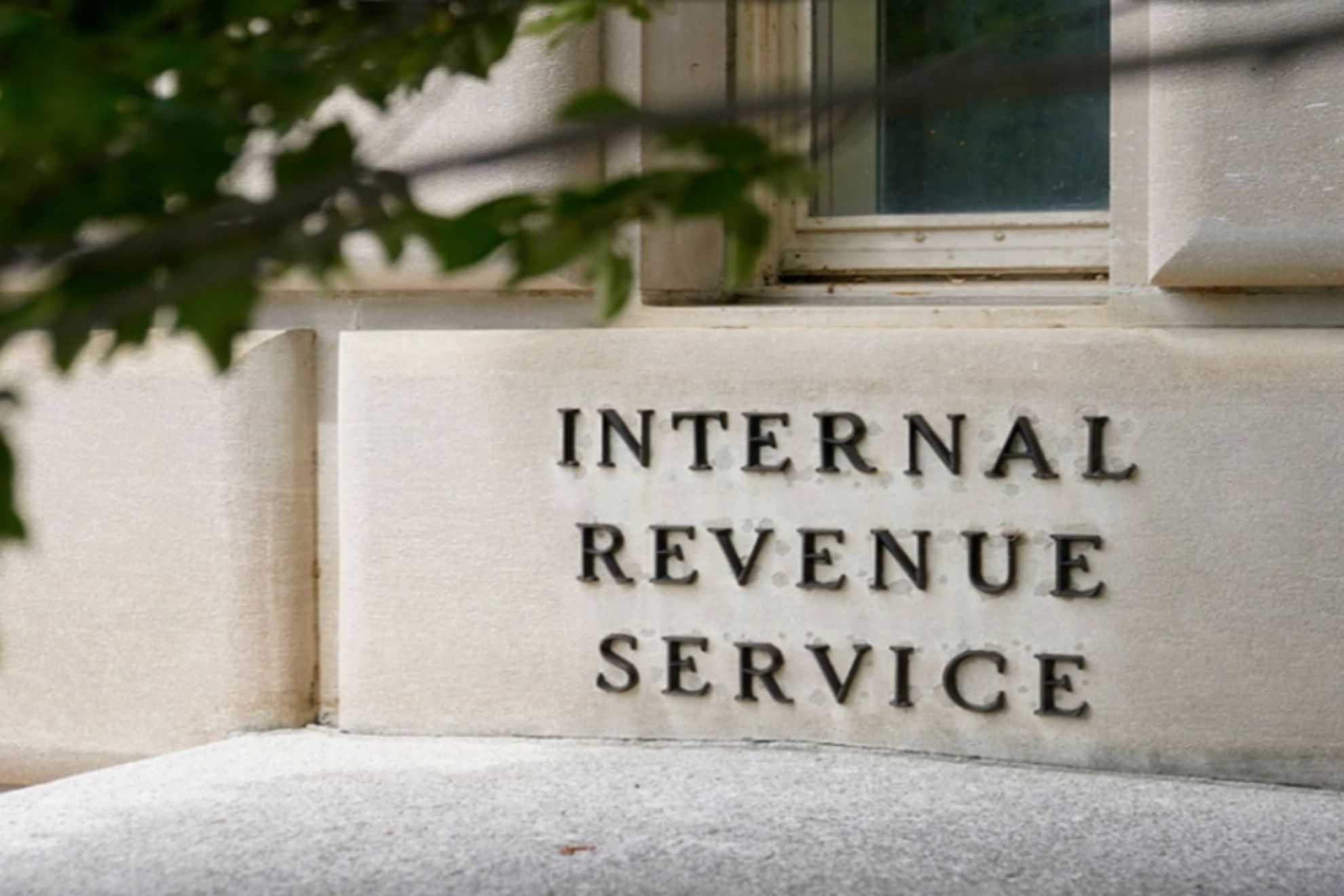

Finance
What Does IRS Code 9001 Mean?
Published: October 31, 2023
Learn the meaning of IRS code 9001 and its implications for your finances. Stay informed and avoid any potential tax issues.
(Many of the links in this article redirect to a specific reviewed product. Your purchase of these products through affiliate links helps to generate commission for LiveWell, at no extra cost. Learn more)
Table of Contents
Introduction
Welcome to the world of tax codes and regulations! As complex and daunting as they may seem, understanding and adhering to these codes is crucial for every taxpayer. One such code that often elicits confusion and curiosity is IRS Code 9001. In this article, we will unravel the mystery behind IRS Code 9001 and shed light on its implications for taxpayers.
IRS Code 9001 is a section of the Internal Revenue Code that was introduced by the Internal Revenue Service (IRS), the governmental agency responsible for collecting federal taxes in the United States. This specific code pertains to certain notifications and procedures that taxpayers need to follow when interacting with the IRS.
While the mention of tax codes may induce apprehension in some individuals, it is essential to understand that these codes are designed to ensure fairness, accuracy, and efficiency in the tax system. By adhering to these codes, taxpayers can navigate the complexities of the tax landscape and fulfill their obligations.
In the following sections, we will delve deeper into the background, purpose, key provisions, compliance requirements, and penalties associated with IRS Code 9001. We will also highlight available resources and assistance to aid taxpayers in understanding and complying with this code.
Whether you are an individual taxpayer, a small business owner, or a corporate entity, familiarizing yourself with IRS Code 9001 will empower you to navigate the tax environment with confidence. So, let’s embark on this journey and demystify the intricacies of IRS Code 9001!
Background on IRS Code 9001
To fully understand IRS Code 9001, it’s essential to explore its origins and the context in which it was introduced. The Internal Revenue Service (IRS) is responsible for administering and enforcing tax laws in the United States. As part of its efforts to streamline tax procedures and enhance communication with taxpayers, the IRS implemented IRS Code 9001.
IRS Code 9001 was introduced as part of the modernization efforts undertaken by the IRS to improve its operations and provide better services to taxpayers. It was designed to establish a standardized notification process and set clear guidelines on the procedures involved in taxpayer interactions with the IRS.
Prior to the implementation of IRS Code 9001, there was no specific code that explicitly addressed the notification requirements and procedures for taxpayer communications with the IRS. This sometimes led to confusion and inconsistencies in the way the IRS and taxpayers communicated with each other.
By introducing IRS Code 9001, the IRS aimed to streamline and standardize the notification and communication process. This code established a clear framework for how the IRS should notify taxpayers of various issues, such as payments due, examination requests, and appeals decisions.
Furthermore, IRS Code 9001 laid down guidelines on how taxpayers should respond to these notifications. It clarified the deadlines for responses and provided instructions on the appropriate channels for communication. This level of clarity and consistency helps facilitate efficient and effective communication between taxpayers and the IRS.
It’s important to note that IRS Code 9001 is not a standalone set of regulations; it is part of the broader Internal Revenue Code that governs taxation in the United States. It works in conjunction with other sections of the code to ensure compliance and fairness in the tax system.
Now that we have explored the background of IRS Code 9001, let’s move on to understanding its purpose and significance for taxpayers.
Purpose of IRS Code 9001
IRS Code 9001 serves several important purposes that are essential for both taxpayers and the Internal Revenue Service (IRS). Understanding the purpose of this code can help taxpayers navigate their interactions with the IRS more effectively and ensure compliance with tax regulations.
The primary purpose of IRS Code 9001 is to establish a standardized process for notifications and procedures related to taxpayer interactions with the IRS. By providing clear guidelines, this code helps promote consistency and transparency in communication between taxpayers and the IRS.
One of the key purposes of IRS Code 9001 is to ensure that taxpayers receive timely and accurate notifications from the IRS regarding their tax obligations. This includes notifications about payment due dates, audit requests, appeals decisions, and other important matters. By standardizing the notification process, the IRS can ensure that taxpayers are informed in a consistent and efficient manner.
Another important purpose of IRS Code 9001 is to outline the procedures that taxpayers should follow when responding to the notifications received from the IRS. This includes providing guidance on the appropriate channels for communication, specifying the deadlines for responses, and outlining the necessary documentation or information that should be included in the response.
Additionally, IRS Code 9001 ensures that there is a fair and efficient process in place for resolving disputes and appeals. This code establishes the procedures for filing appeals with the IRS and outlines the timeline for resolution. By providing clear guidelines, it promotes fairness and consistency in the appeal process.
Furthermore, IRS Code 9001 aims to facilitate effective communication between taxpayers and the IRS. By standardizing the notification and response procedures, it helps streamline the communication process and reduces the likelihood of miscommunication or confusion. This ultimately benefits both taxpayers and the IRS by reducing errors and ensuring that information is exchanged accurately and promptly.
Overall, the purpose of IRS Code 9001 is to promote fairness, accuracy, and efficiency in taxpayer interactions with the IRS. By establishing clear guidelines for notifications, procedures, and communication, this code helps taxpayers understand their obligations and navigate the tax system more effectively.
Now that we have explored the purpose of IRS Code 9001, let’s delve into its key provisions and regulations.
Key Provisions and Regulations of IRS Code 9001
IRS Code 9001 includes several key provisions and regulations that outline the requirements and procedures for taxpayer interactions with the Internal Revenue Service (IRS). These provisions are crucial for taxpayers to understand and comply with in order to fulfill their tax obligations effectively.
One of the primary provisions of IRS Code 9001 is the requirement for the IRS to provide timely and accurate notifications to taxpayers regarding their tax-related matters. This includes notifications about payments due, examination requests, collection actions, and appeals decisions. These notifications may be sent via mail or electronically, depending on the preference and communication method chosen by the taxpayer.
Another important provision of IRS Code 9001 is the establishment of specific deadlines for taxpayers to respond to the notifications received from the IRS. These deadlines vary depending on the nature of the notification but are designed to ensure that taxpayers have sufficient time to provide the requested information or take necessary actions. It is essential for taxpayers to be aware of these deadlines and respond promptly to avoid penalties or further complications.
IRS Code 9001 also outlines the appropriate channels for communication between taxpayers and the IRS. This includes providing guidance on where to send responses, appeals, or other relevant documentation. Taxpayers should carefully follow these instructions to ensure their communication reaches the designated IRS office in a timely manner.
Moreover, IRS Code 9001 specifies the documentation or information that should be included in the taxpayer’s response or appeal. This ensures that the IRS receives the necessary details to make informed decisions or resolve disputes effectively. Taxpayers must carefully review the notification received and provide the required information accurately to avoid delays or potential penalties.
In addition to these provisions, IRS Code 9001 establishes certain regulations regarding the appeals process. It outlines the procedures and requirements for taxpayers who wish to contest IRS decisions or appeal audit findings. Understanding and following these regulations can help taxpayers navigate the appeal process successfully and present their case in the most effective manner.
It’s worth noting that the specific provisions and regulations within IRS Code 9001 may vary depending on the taxpayer’s circumstances and the nature of their interaction with the IRS. Therefore, taxpayers should carefully review the notifications received from the IRS and seek professional advice if needed to ensure compliance with the specific requirements applicable to their situation.
Now that we have explored the key provisions and regulations of IRS Code 9001, let’s move on to discussing the implications of this code for taxpayers.
Implications for Taxpayers
Understanding the implications of IRS Code 9001 is crucial for taxpayers to navigate the tax landscape effectively and ensure compliance with the Internal Revenue Service (IRS) regulations. The code’s provisions and regulations have several implications that taxpayers need to be aware of:
1. Communication and Notification: IRS Code 9001 ensures that taxpayers receive timely and accurate notifications from the IRS regarding their tax obligations. This means that taxpayers should carefully review any notifications they receive and take appropriate actions within the specified deadlines. Failure to respond or address the IRS communication can result in penalties or other adverse consequences.
2. Compliance Requirements: IRS Code 9001 outlines the procedures and requirements for taxpayers to comply with when responding to IRS notifications. It is essential for taxpayers to understand and follow these requirements to ensure they provide the necessary information and documentation in a timely and accurate manner.
3. Timelines and Deadlines: Adhering to the specified timelines and deadlines is crucial for taxpayers. IRS Code 9001 establishes specific timeframes for taxpayers to respond to IRS notifications, submit appeals, or take other necessary actions. Failing to meet these deadlines may result in penalties, interest, or other consequences.
4. Accuracy of Information: Taxpayer responses and appeals submitted to the IRS must provide accurate and complete information. IRS Code 9001 emphasizes the importance of ensuring the accuracy of the information provided to the IRS. This includes financial statements, supporting documents, and any other relevant information required for tax assessments or appeals.
5. Penalties for Non-Compliance: Non-compliance with IRS Code 9001 can lead to penalties and sanctions imposed by the IRS. These penalties can vary depending on the nature and severity of the non-compliance. It is essential for taxpayers to understand the potential penalties and take steps to comply with the code’s requirements to avoid unnecessary financial and legal consequences.
6. Communication Channels: IRS Code 9001 specifies the appropriate channels for communication with the IRS. Taxpayers should follow these guidelines to ensure their communication reaches the designated IRS office. Utilizing the correct communication channels is essential to ensure efficient and effective communication between taxpayers and the IRS.
7. Professional Assistance: Given the complexities of tax regulations, seeking professional assistance can be valuable for taxpayers. Tax professionals, such as certified public accountants or tax attorneys, can provide guidance and ensure compliance with IRS Code 9001. Their expertise can help taxpayers navigate the intricacies of the code and effectively navigate their interactions with the IRS.
Understanding the implications of IRS Code 9001 empowers taxpayers to navigate their tax obligations effectively and avoid potential penalties and complications. By staying informed and complying with the code’s requirements, taxpayers can maintain a smooth and efficient relationship with the IRS.
Now, let’s delve into the compliance requirements for taxpayers under IRS Code 9001.
Compliance Requirements for Taxpayers
IRS Code 9001 establishes specific compliance requirements that taxpayers must fulfill when interacting with the Internal Revenue Service (IRS). Understanding and meeting these requirements is essential to ensure compliance with tax regulations and avoid potential penalties or disputes. Here are the key compliance requirements for taxpayers under IRS Code 9001:
1. Timely Response: Taxpayers are required to respond to IRS notifications within the specified timelines. Failure to respond on time can lead to penalties and further complications. It is important for taxpayers to carefully review the notifications they receive and take prompt action to provide the necessary information or address any issues raised by the IRS.
2. Accuracy of Information: Taxpayers must ensure that the information provided to the IRS is accurate and complete. This includes financial statements, supporting documents, and any other relevant information requested by the IRS. Inaccurate or false information can lead to serious consequences, including penalties and potential criminal charges.
3. Documentation: Taxpayers are required to maintain proper documentation to support their tax filings and claims. This includes keeping records of income, expenses, deductions, and credits. It is essential to retain these documents for a specified period of time as specified by the IRS. Having organized and accurate records can facilitate compliance and provide evidence in case of an audit or review.
4. Payment Obligations: Taxpayers must fulfill their payment obligations in accordance with the IRS guidelines. This includes paying taxes owed by the specified due dates, estimating and paying their taxes on time if they are self-employed, and making any required installment payments. Failure to meet payment obligations can result in penalties, interest charges, and potentially more severe consequences.
5. Proper Use of Communication Channels: Taxpayers must use the designated communication channels specified by the IRS to respond to notifications, file appeals, or provide any required documentation or information. Utilizing the correct communication channels ensures that the IRS receives and processes the taxpayer’s response or appeal in a timely manner.
6. Seeking Professional Assistance: Given the complexities of tax regulations, taxpayers may benefit from seeking professional assistance. Tax professionals, such as certified public accountants or tax attorneys, can provide valuable guidance and ensure compliance with IRS Code 9001. Their expertise can help taxpayers navigate the code’s requirements, minimize errors, and streamline their interactions with the IRS.
It is important for taxpayers to familiarize themselves with these compliance requirements and take necessary steps to adhere to them. Staying proactive, organized, and informed can help taxpayers fulfill their obligations, maintain compliance with tax laws, and avoid potential penalties or disputes with the IRS.
In the next section, we will explore the implications of non-compliance with IRS Code 9001 and the potential penalties that taxpayers may face.
Penalties for Non-Compliance with IRS Code 9001
Non-compliance with IRS Code 9001 can result in various penalties and consequences for taxpayers. It is essential for taxpayers to understand the potential repercussions of not meeting the compliance requirements outlined in the code. Here are some penalties that taxpayers may face for non-compliance:
1. Failure-to-File Penalty: If taxpayers fail to file their tax returns or other required documents within the specified deadlines, they may be subject to a failure-to-file penalty. This penalty is typically a percentage of the unpaid tax amount and increases the longer the return is not filed, up to a maximum limit.
2. Failure-to-Pay Penalty: Taxpayers who fail to pay their taxes owed within the designated timeframe may face a failure-to-pay penalty. This penalty is usually a percentage of the outstanding tax balance and is charged for each month or part of a month that the payment is overdue. The penalty can accumulate over time and significantly increase the total amount owed.
3. Accuracy-Related Penalties: If taxpayers submit inaccurate or false information on their tax returns or other relevant documents, they may incur accuracy-related penalties. These penalties can be imposed when the IRS identifies significant understatements of tax liability, negligence, or substantial understatement of income. Accuracy-related penalties are typically a percentage of the tax underpayment attributable to the inaccurate information provided.
4. Late Payment Interest: In addition to penalties, taxpayers may also be subject to interest charges on any unpaid tax amounts. Interest accrues on the outstanding balance from the original due date to the date of payment, and the interest rate is determined by the IRS. It is important to note that interest charges can significantly increase the total amount owed over time.
5. Collection Actions: Failure to comply with IRS Code 9001 can also result in collection actions by the IRS. These actions may include wage garnishment, bank levies, property liens, or the seizure of assets to satisfy the outstanding tax debt. Collection actions can have severe financial and personal implications for taxpayers.
6. Criminal Penalties: In cases of intentional fraud or evasion, taxpayers may face criminal penalties, including fines and potential imprisonment. These penalties are reserved for more serious violations of tax laws and are pursued by the IRS in coordination with law enforcement agencies.
7. Audit or Examination: Non-compliance with IRS Code 9001 may increase the likelihood of being selected for an audit or examination by the IRS. An audit involves a review of the taxpayer’s financial records and returns to ensure compliance with tax laws. It can be time-consuming, costly, and may result in additional penalties and interest charges if discrepancies or inaccuracies are discovered.
8. Reputational Damage: Non-compliance with tax laws and IRS Code 9001 can also have reputational implications for taxpayers. Negative publicity, loss of business opportunities, and damage to personal or professional relationships may occur due to non-compliance, leading to long-term consequences.
It is crucial for taxpayers to understand the potential penalties and consequences of non-compliance with IRS Code 9001. By diligently fulfilling their compliance requirements, seeking professional assistance if needed, and maintaining accurate and complete tax records, taxpayers can minimize the risk of penalties and maintain a positive relationship with the IRS.
In the next section, we will explore the resources and assistance available to taxpayers to navigate IRS Code 9001.
Resources and Assistance for Taxpayers
Navigating IRS Code 9001 and understanding the intricacies of tax regulations can be challenging for taxpayers. However, there are various resources and assistance available to help taxpayers fulfill their obligations and comply with the Internal Revenue Service (IRS) guidelines. Here are some valuable resources and assistance options:
1. IRS Website: The official IRS website (www.irs.gov) is a comprehensive resource that offers a wealth of information on tax regulations, forms, publications, and guidance related to IRS Code 9001. Taxpayers can access various resources, including frequently asked questions, tax calculators, and downloadable forms and instructions.
2. Telephone Assistance: The IRS provides telephone assistance for taxpayers to address questions, resolve issues, and seek guidance. The IRS toll-free hotline offers assistance for general tax inquiries, as well as specific lines for topics such as business taxes, international matters, and refunds. Taxpayers can find the appropriate contact numbers on the IRS website.
3. Local IRS Offices: Taxpayers can visit local IRS offices for in-person assistance. These offices provide services such as obtaining tax forms, making payments, resolving disputes, and getting general guidance. Appointments may be required for certain services, so it is advisable to check the IRS website or call ahead for availability and requirements.
4. Free File Program: The IRS offers the Free File program, which provides free online tax preparation and filing services for eligible individuals and families. Taxpayers can choose from a range of software providers participating in the program to electronically file their tax returns quickly and accurately.
5. Tax Professionals: Seeking assistance from qualified tax professionals, such as certified public accountants (CPAs) or tax attorneys, can be highly beneficial. Tax professionals have in-depth knowledge of tax laws, including IRS Code 9001, and can provide personalized guidance tailored to the taxpayer’s specific needs and circumstances.
6. Online Tax Communities and Forums: There are numerous online platforms and forums where taxpayers can connect with fellow taxpayers, tax professionals, and industry experts. Participating in these communities can provide insights, tips, and support for understanding and complying with tax regulations, including IRS Code 9001.
7. Educational Resources: Various educational resources, such as workshops, seminars, and webinars, are available to help taxpayers understand tax laws and regulations. These resources may be offered by the IRS, tax professional organizations, or other reputable institutions. Attending these training sessions can help taxpayers enhance their knowledge and navigate tax obligations effectively.
8. Taxpayer Advocate Service: The Taxpayer Advocate Service (TAS) is an independent organization within the IRS that provides assistance to taxpayers who are experiencing significant financial or administrative difficulties. TAS can help taxpayers resolve problems with the IRS and provide guidance in understanding their rights and responsibilities under IRS Code 9001.
It is important for taxpayers to take advantage of these resources and assistance options to navigate IRS Code 9001 effectively. By seeking guidance, staying informed, and maintaining accurate records, taxpayers can minimize errors, ensure compliance, and navigate their tax obligations with confidence.
Now, let’s conclude our exploration of IRS Code 9001 and its implications for taxpayers.
Conclusion
IRS Code 9001 is a significant section of the Internal Revenue Code that outlines the notification requirements and procedures for taxpayer interactions with the Internal Revenue Service (IRS). Understanding and adhering to this code is crucial for every taxpayer to navigate the tax landscape effectively and ensure compliance with tax regulations.
In this article, we have explored the background, purpose, key provisions, compliance requirements, penalties, and available resources related to IRS Code 9001. We have seen that this code aims to establish a standardized process for communication and notification between taxpayers and the IRS, promoting fairness, accuracy, and efficiency in taxpayer interactions.
We have discussed the implications of IRS Code 9001 for taxpayers, emphasizing the importance of timely responses, accurate information, proper documentation, and compliance with established timelines and communication channels. We have highlighted the potential penalties and consequences that taxpayers may face for non-compliance and the resources and assistance available to facilitate compliance.
By familiarizing themselves with IRS Code 9001 and seeking professional guidance when needed, taxpayers can navigate their tax obligations effectively, minimize errors, and avoid potential penalties or disputes with the IRS. They can utilize resources such as the official IRS website, telephone assistance, local IRS offices, free filing programs, tax professionals, online communities, educational resources, and the Taxpayer Advocate Service.
It is important for taxpayers to actively engage with these resources, stay informed about updates and changes in tax regulations, and maintain accurate records to ensure compliance with IRS Code 9001. By doing so, taxpayers can fulfill their obligations, maintain a positive relationship with the IRS, and experience a smoother and more efficient tax filing and payment process.
Remember, IRS Code 9001 is just one part of the complex tax system, and it is advisable for taxpayers to stay informed about other relevant tax codes and regulations that apply to their specific circumstances. Consulting with qualified tax professionals can provide personalized guidance and ensure compliance with all applicable tax laws.
Armed with knowledge, resources, and the resolve to meet their tax obligations, taxpayers can navigate the complexities of the tax system and have peace of mind knowing that they are fulfilling their responsibilities as responsible and compliant taxpayers.














